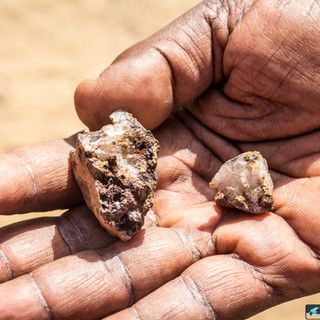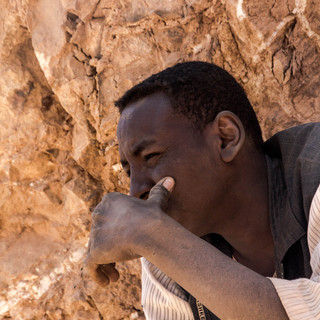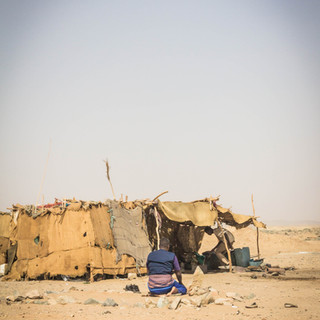EXPLORING SUDAN 2017
- jppaiement
- 3 oct. 2017
- 2 min de lecture
A recent client assignment has seen me leaving home for 10 days to Sudan. This was my second trip to the Nubian Desert, in the northern part of this country. Travelling to this place involves long flights and drives. After a 14h flight to Doha and a 4 hours flight to Khartoum, I was rewarded to a day off in the capital before going for a 10 hours drive to the site. After driving 6 hours to the city of Abu Hamad on relatively well maintained paved road, the desert drive was different, mostly following an invisible road, through hard packed ground, sand pits and intimidating black mountains.
The remainder of my time was spent driving from one site to another to get a glimpse of the geology and the current mining activities. What is more striking than the shear potential for gold is how many people moved to this desolate landscape with the dream of finding their share of the treasure. This treasure hunt started way before our time, with the pharaohs. This valley has been known throughout the history as a source for the precious yellow metal. More recently, gold has been a magnet for hungry and displaced people from different regions of Sudan. The people I met were mostly from South Sudan and Darfour. The current political situation and famine in these regions has driven people out of their home in search of a better world. The Nubian Desert is in no way a better world, but the hope of finding gold and work will make people forget about the harsh conditions.
The artisanal miners have organised themselves over the last 5 years into a well oiled industry. Miners have now access to heavy machinery, metals detectors and amenities in makeshift markets. Most miners, however, still work in precarious conditions digging hole in gold rich vein using improvised chisels and hammers. The roc they extract is packed in rice bags and should to the mills by the weight. The mills are areas where other people, more fortunate, have set up small crushing equipment in which they turn the quartz veins into rock powder to which mercury is added. Mercury acts as a gold magnet, creating an amalgam, hence recuperating about 30-50% of the gold contained in the rock extracted from the different site.The miners have little to live on besides a tent, cigarettes, one bean meal a day with little meat and home brewed spiced coffee.
As seen under our North American standards, the miners appear to be poor but from the local stand point, they see themselves as better off than dying in the home regions. All of the miners I have encountered were welcoming, smiling and willing to share the very little things they own with me, especially a cup of hot spicy coffee.





























































Commentaires